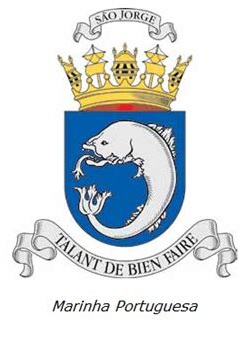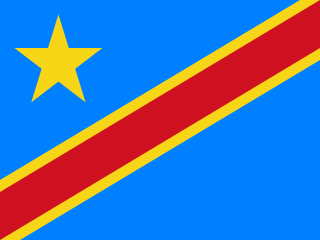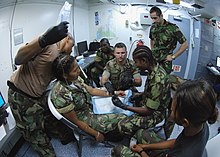
The Angolan Armed Forces or FAA is the military of Angola. The FAA consist of the Angolan Army, the Angolan Navy and the National Air Force of Angola. Reported total manpower in 2021 was about 107,000. The FAA is headed by the Chief of the General Staff António Egídio de Sousa Santos since 2018, who reports to the minister of National Defense, currently João Ernesto dos Santos.
The Cape Verdean Armed Forces, Cabo Verdean Armed Forces or FACV are the military of Cape Verde. They include two branches, the National Guard and the Coast Guard.

The politics of São Tomé and Príncipe takes place in a framework of a unitary semi-presidential representative democratic republic, whereby the President of São Tomé and Príncipe is head of state and the Prime Minister of São Tomé and Príncipe is head of government, and of a multi-party system. Executive power is exercised by the President and the Government. Legislative power is vested in both the government and the National Assembly. The Judiciary is independent of the executive and the legislature. São Tomé has functioned under a multiparty system since 1990. Following the promulgation of a new constitution in 1990, São Tomé and Príncipe held multiparty elections for the first time since independence. Shortly after the constitution took effect, the National Assembly formally legalized opposition parties. Independent candidates also were permitted to participate in the January 1991 legislative elections.

Fradique Bandeira Melo de Menezes is a São Toméan politician who was the third president of São Tomé and Príncipe from 2001 to 2003 and again from 2003 to 2011.

The national flag of São Tomé and Príncipe is a horizontal triband of green, yellow, and green, with a red isosceles triangle at the hoist and two five-pointed black stars on the yellow band. The flag's aspect ratio is 1:2 and the ratio of the bands are 2:3:2. The flag was adopted upon São Tomé and Príncipe's independence from Portugal on 12 July 1975. The design is based on, and nearly identical to, the first flag of the Movement for the Liberation of São Tomé and Príncipe (MLSTP), which led the country to its independence.

São Tomé and Príncipe is an island country off the coast of Africa. Culturally, the people are African but have been highly influenced by the Portuguese rulers of the islands.

Forro Creole or Sãotomense is a Portuguese-based creole language spoken in São Tomé and Príncipe.

The Portuguese Navy, also known as the Portuguese War Navy or as the Portuguese Armada, is the navy of the Portuguese Armed Forces. Chartered in 1317 by King Dinis of Portugal, it is the oldest continuously serving navy in the world; in 2017, the Portuguese Navy commemorated the 700th anniversary of its official creation.

The National Republican Guard or GNR is the national gendarmerie force of Portugal.

Africa Partnership Station is an international initiative developed by United States Naval Forces Europe-Africa, which works cooperatively with U.S. and international partners to improve maritime safety and security in Africa as part of US Africa Command's Security Cooperation program.

São Tomé and Príncipe – United States relations are bilateral relations between São Tomé and Príncipe and the United States. The U.S. Ambassador based at the embassy in Libreville, Gabon was accredited to Sao Tome on a non-resident basis until 2022, when that role was designated to the U.S. Ambassador based at the embassy in Luanda, Angola. The Ambassador and Embassy staff make regular visits to the islands. The US State Department has described relations with São Tomé and Príncipe as excellent.

The following outline is provided as an overview of and topical guide to São Tomé and Príncipe:

São Tomé and Príncipe, officially the Democratic Republic of São Tomé and Príncipe, is an island country in the Gulf of Guinea, off the western equatorial coast of Central Africa. It consists of two archipelagos around the two main islands of São Tomé and Príncipe, about 150 km (93.21 mi) apart and about 250 and 225 km off the northwestern coast of Gabon. With a population of 201,800, São Tomé and Príncipe is the second-smallest and second-least populous African sovereign state after Seychelles.

Portugal–São Tomé and Príncipe relations refers to the diplomatic relations between the Portuguese Republic and São Tomé and Príncipe. Both nations are members of the Community of Portuguese Language Countries and the United Nations.

The National Navy is the maritime component of the Armed Forces of the Democratic Republic of Congo (FARDC). It is a brown-water navy, which is currently commanded by Vice Admiral Rombault Mbuayama Nsiona.
In Portugal, the coast guard role is performed by several government agencies that, together, form the Maritime Authority System. The SAM includes the Portuguese Navy, the National Republican Guard (GNR), the Portuguese Air Force, the Civil Protection Authority, the National Medical Emergency Institute and the Criminal Investigation Police (PJ).

India–São Tomé and Príncipe relations refers to the international relations that exist between India and São Tomé and Príncipe (STP). India has an embassy in São Tomé. STP maintains an Honorary Consul in New Delhi.
The Chief of Staff of the Armed Forces of São Tomé and Príncipe is the highest-ranking military officer of in the Armed Forces of São Tomé and Príncipe, who is responsible for maintaining the operational command of the military.

São Toméan nationality law is regulated by the Constitution of São Tomé and Príncipe, as amended; the Nationality Law, and its revisions; and various international agreements to which the country is a signatory. These laws determine who is, or is eligible to be, a national of São Tomé and Príncipe. The legal means to acquire nationality, formal legal membership in a nation, differ from the domestic relationship of rights and obligations between a national and the nation, known as citizenship. Nationality describes the relationship of an individual to the state under international law, whereas citizenship is the domestic relationship of an individual within the nation. São Toméan nationality is typically obtained under the principles of jus soli, i.e. by birth in the territory, or jus sanguinis, i.e. by birth in São Tomé and Príncipe or abroad to parents with São Toméan nationality. It can be granted to persons with an affiliation to the country, or to a permanent resident who has lived in the country for a given period of time through naturalization.














